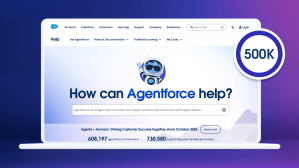Quick Take: As consumers return to shopping, travel, and entertainment habits, customer services teams must be prepared for a continued deluge of inquiries over the digital channels that people have embraced.
A recent string of promising developments, including universal vaccine eligibility, is giving Americans hope for a return to normalcy. This is no doubt a delight for the many businesses whose operations and revenue have been constrained for over a year.
However, it also begs the question of just how soon people will return to their previous routines, the questions they’ll have along the way, and how companies — especially their customer service teams — will operate in this new dynamic.
We conducted a survey of U.S. consumers to better understand post-pandemic outlooks and how behavior has changed over the course of a tumultuous year. We also mined recent data from our State of Service and State of the Connected Customer reports to provide context around what these findings mean for customer service organizations.
Society is on the cusp of a grand reopening
Deprived for over a year of their ability to shop, travel, or dine without precautions and anxiety — to name a few examples — Americans are increasingly ready to get back to their favorite activities and businesses.
Case in point: two-thirds (67%) of consumers anticipate that they’ll have eaten in a restaurant just three months from now, a figure that rises to 89% by the end of the year. Travel is anticipated to ramp up, as well, with nearly half (45%) expecting that they’ll have stayed in a hotel or short-term rental by mid-summer.
Data suggests that consumers’ timelines for resuming certain activities accelerates as they become vaccinated. For example, 59% of those who are already vaccinated expect they’ll take a flight by the end of the year, compared to 50% of those who have yet to be vaccinated. Of course, time will tell whether individuals will become bolder in their plans as more shots go in arms.
Service organizations must prepare for high case volume and complexity
Reopenings will introduce a slew of new questions around updated policies, protocols, and safety measures. This adds a new level of challenge for agents who are already contending with increased workloads and more demanding customers.
54% of customer service professionals report their organizations experienced increased case volume during the pandemic. At the same time, 55% of consumers noted that their standards for customer service had risen.
Our most recent survey shows that 82% of consumers expect to continue contacting customer service at pandemic-level rates, and an additional 10% say their contact rates will rise even higher. Yet just 36% of service professionals feel fully prepared to handle a surge in service and support cases, and just 39% feel fully prepared to handle increased case complexity. This sets the stage for potential challenges as increased vaccination rates prompt a deluge of inquiries.
Still, there’s reason to be optimistic that teams are laying the groundwork for this longer term dynamic by ramping up investments in key technologies that help absorb demand. For example:
- 73% of service decision makers report that they’re accelerating automation initiatives, a move that 77% of agents believe will allow them to focus on higher value work.
- Additionally, 73% of service decision makers say they are making significant investments in agent training, a tacit acknowledgment that skill sets must be revamped for a new era of higher customer expectations and demand.
Digital engagement will remain the default even as traditional options return
While much remains uncertain about the pace and scope of reopening, one thing is for certain: it will be digitally led. Despite having been cooped up with their devices for over a year, consumers aren’t clamoring for an end to the digital-first engagement that has become the default. In fact, 58% of consumers expect to spend more time online after the pandemic than they did before it.
Consumers have come to embrace, rather than resent, the digitally powered experiences they adopted en masse as lockdowns spread:
- 93% of contactless payment users plan to maintain or even increase their use of the technology once reopenings occur.
- 56% of those who tried virtual experiences like online wine tastings and classes say plan to continue their use once reopenings occur.
- Even as the term “Zoom fatigue” has entered popular vernacular, nearly three-fifths (60%) of video appointment users expect to increase or maintain their use.
Customer service teams should expect this post-pandemic, digital-first behavior to extend to their work. Indeed, 87% of service professionals say that customers have increased their use of digital service channels over the course of the pandemic. Unsurprisingly, video chat tops the list of channels with increased use, but it is followed closely by other digital channels such as mobile apps, online communities, and messenger apps.
Whether related to in-person or digital activities, there’s no doubt that businesses will see an influx of new and revived consumer activity grounded in elevated expectations and standards. The time for those businesses — and their service teams — to prepare is now.
Survey methodology
Salesforce conducted a double-blind online survey of United States consumers aged 18 and over. Data was collected between April 1 and April 5, 2021 and yielded 862 responses.
Additional data cited in this report is from the recent State of Service and State of the Connected Customer reports.














